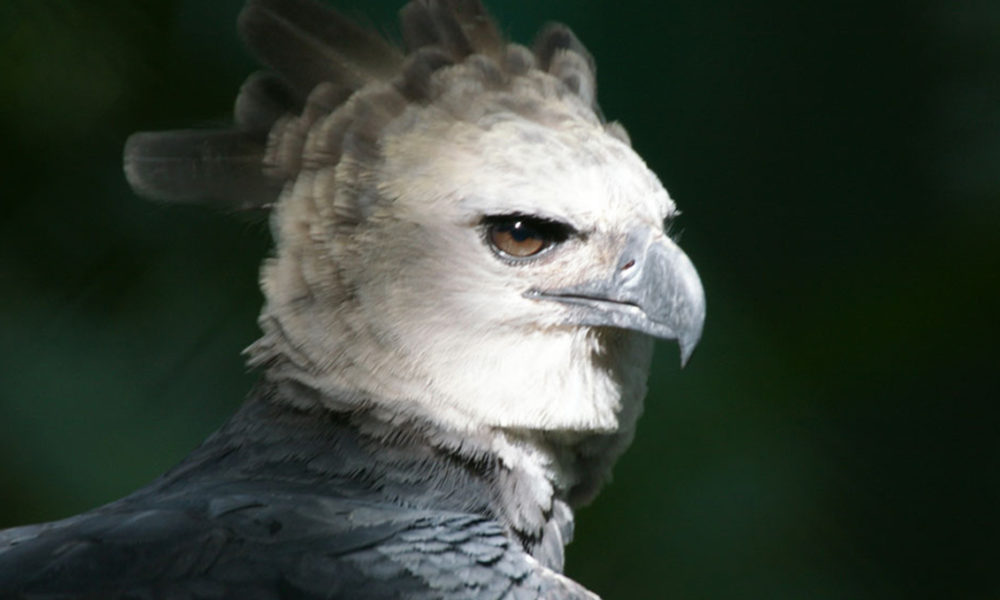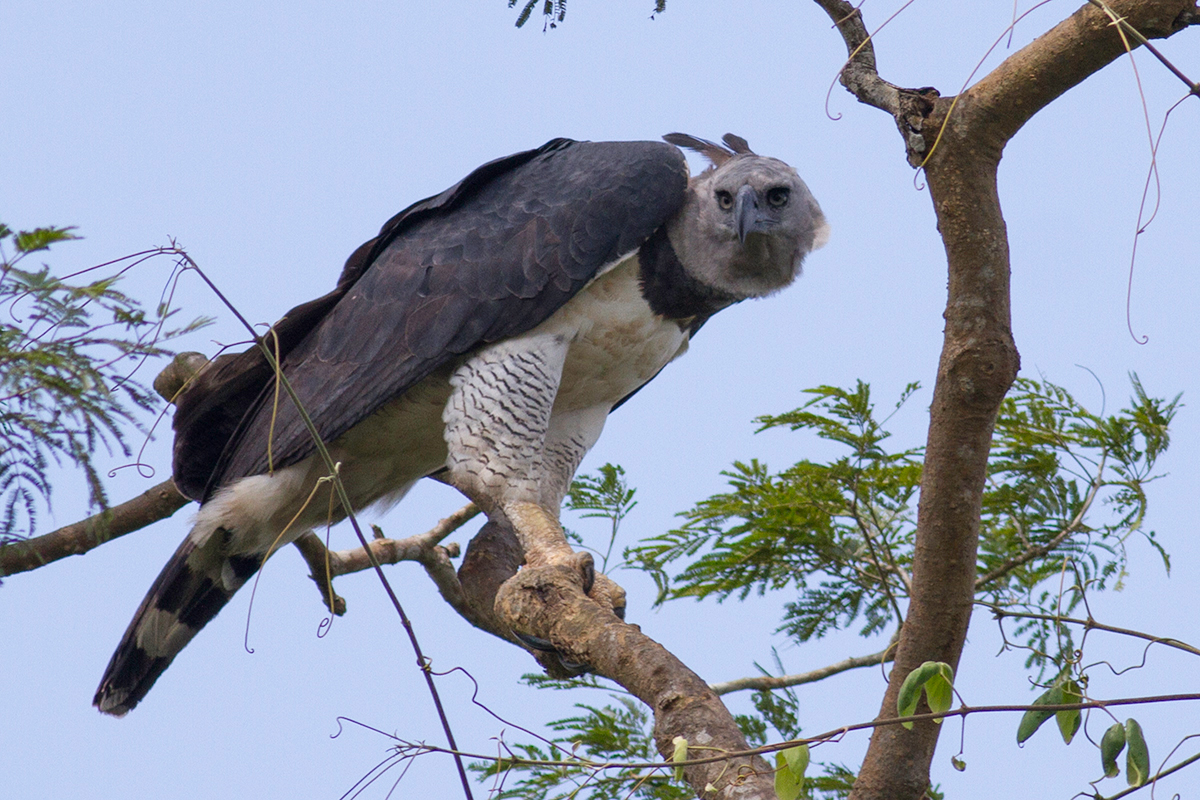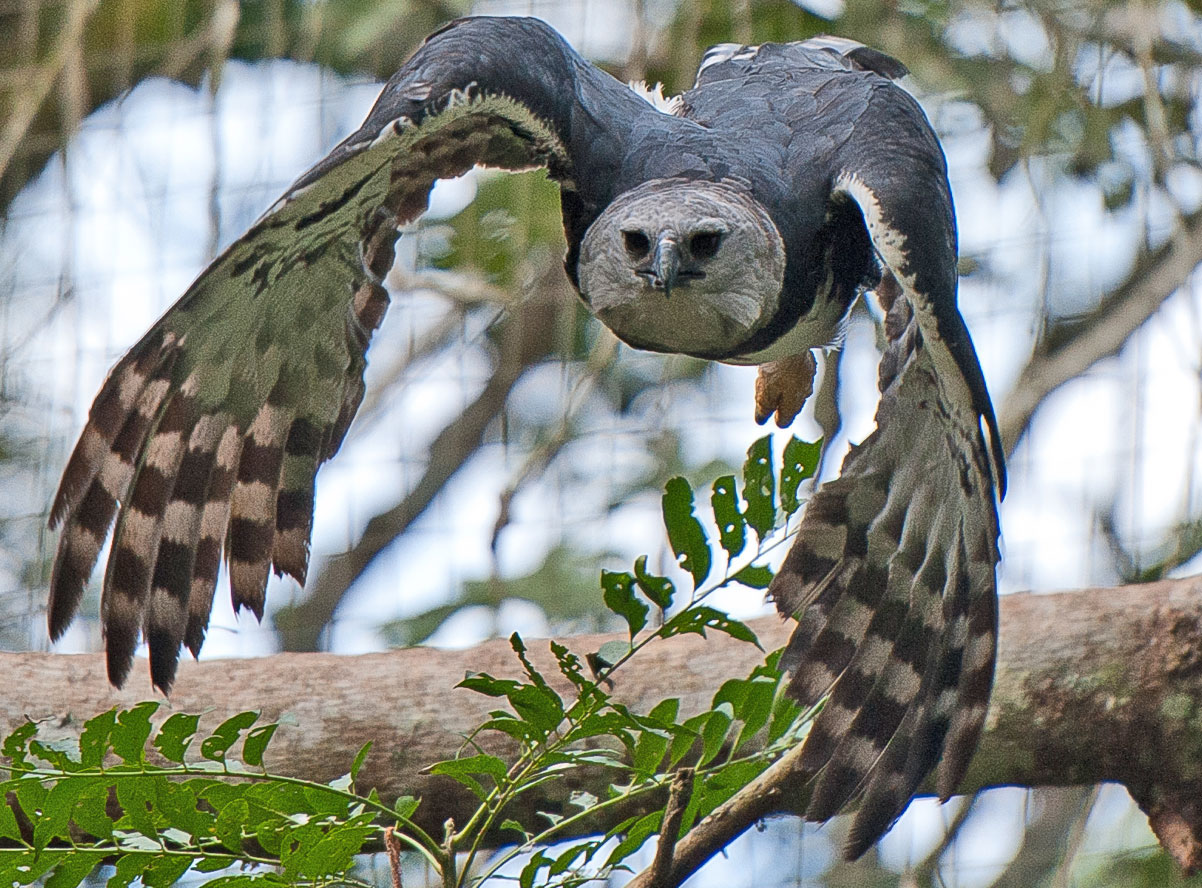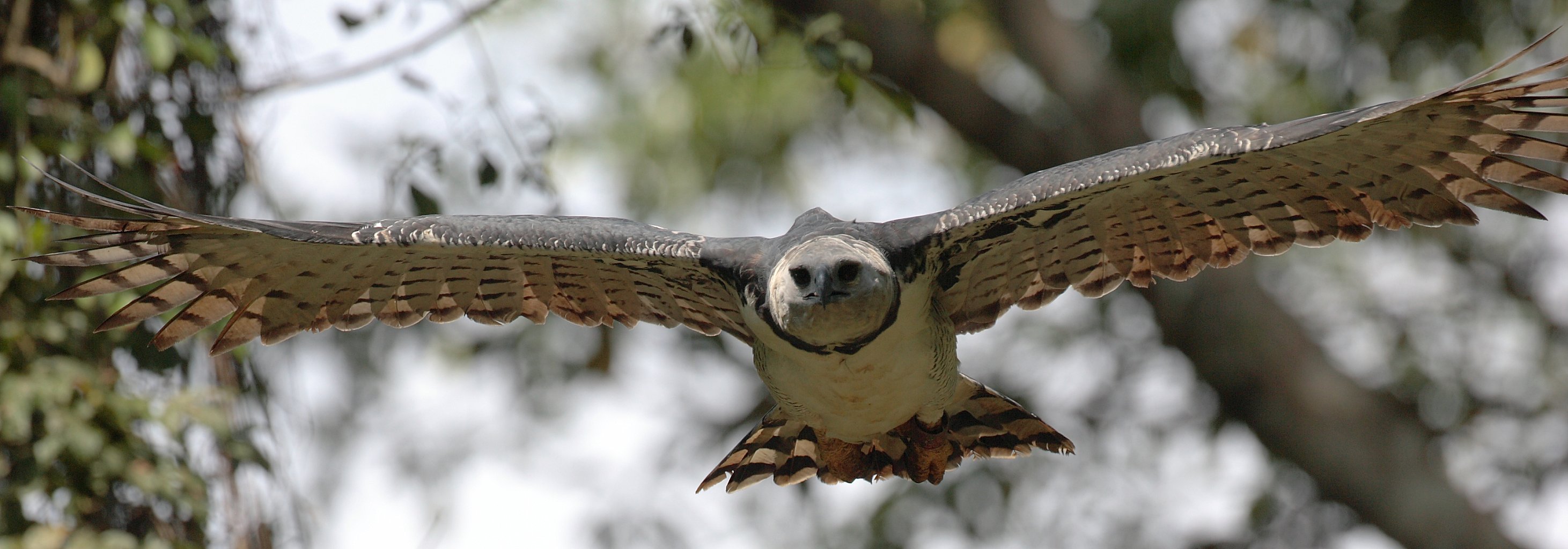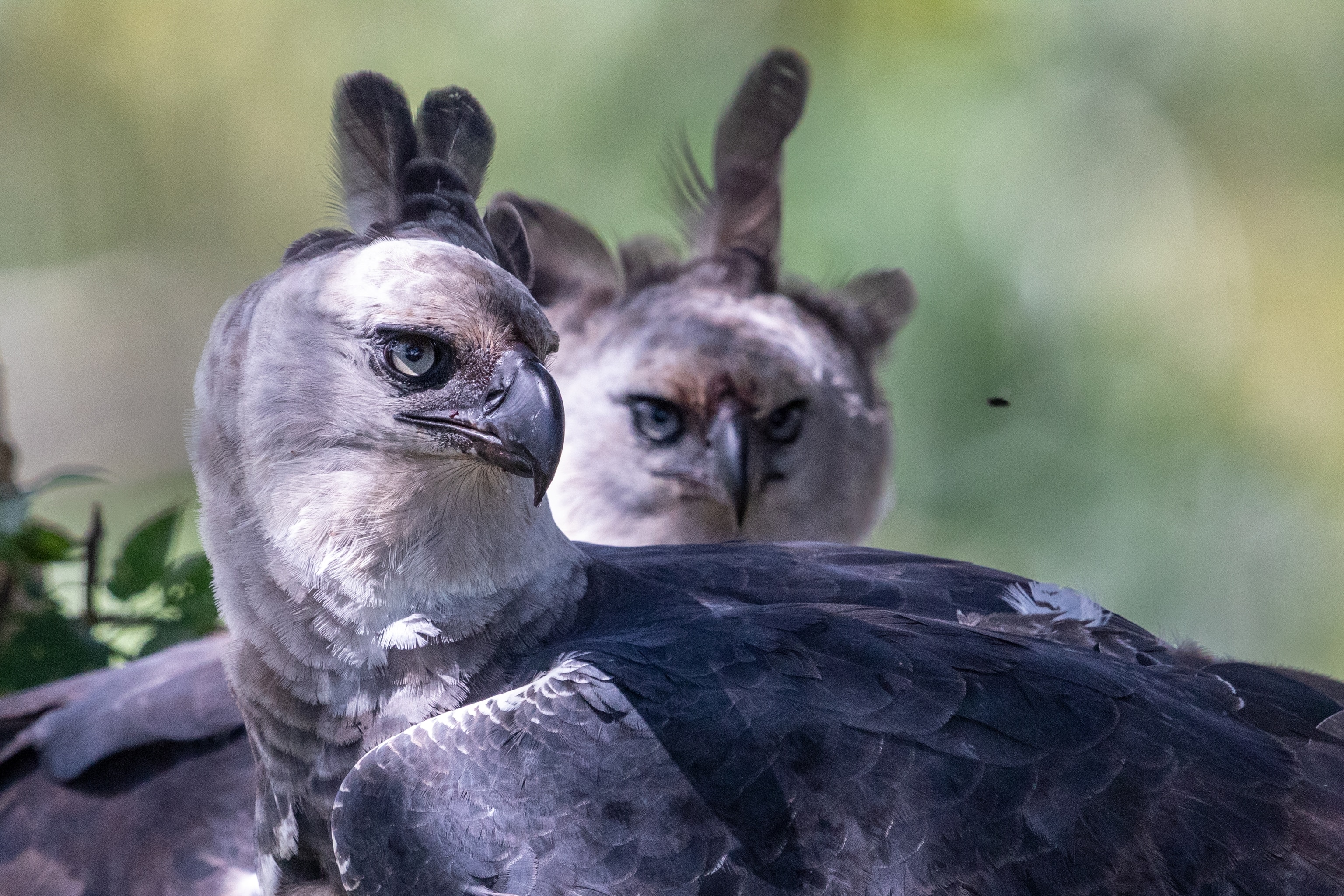STATUS
Near Threatened


Today, more and more people are moving into forested areas and many natural resources, like trees and minerals, are increasingly in demand. As a result, it is becoming harder for many wildlife species, including Harpy Eagles, to find good areas in which to live. In Central America, the loss of Harpy Eagles was particularly noticed as the species became extinct in countries such as El Salvador and began disappearing quickly from others.
Harpy eagles are the largest species of eagle with a body length that can range from 89 to 102 cm and a wing span of 2 m. Their talons can be up to 12.5 cm long. Females are normally larger with an average weight of 7 to 9 kg, while the males weigh an average of 5 to 8 kg. The mantle, scapulars, the top of the secondaries and primaries, secondary coverts, greater primary coverts, and the rump are slate black in color, but can vary to gray. The tail is made up of long gray feathers with horizontal black bars. The breast, belly, and flanks, are light grey with horizontal black stripes. The head, thighs and vent are light gray and the nape has a dark band across it. The crown of harpy eagles consists of long black feathers which raise when threatened, though some theorize they also raise them to direct sound to their ears. Their bills are black and their feet are yellow with black
Harpy eagles invest a lot of time and energy into their offspring. Both parents incubate the egg for the 56 day incubation period. The female will perform most of the incubation while the male is in search of food. Chicks are hatched altricial, and thus are helpless with downy feathers and eyes open. They will only tend a single chick, so if two eggs are laid, the first born will be fed and the second will perish from starvation. The parents actively tend the young for 10 months, which is several months after the chick fledges at 6 or 7 months old. The parents feed the juvenile once every few days and during this time the juvenile is mostly inactive while occasionally making small flights within the nesting tree. Juvenile harpy eagles often remain in the parents' territory for at least 1 year.

STATUS
Near Threatened

SCIENTIFIC NAME
Harpia harpyja

POPULATION
50000 left

LENGTH
3 to 3.5 ft (1 m)

WEIGHT
9-20 lbs (4-9 kg)

HABITAT
RAINFORESTS
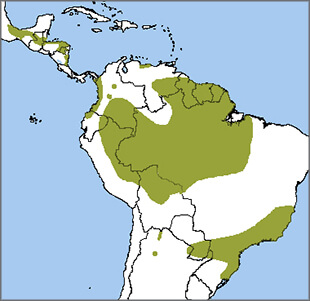
like all top predators, play a very important role in their environment. They are what is known as an umbrella species
Harpy Eagles are among the world's largest and most powerful eagles. Their rear talons are about 3-4 inches long - the same size as a grizzly bear's claws!
Harpy eagles require territories of about 30 square km for adequate hunting. They are very territorial and will drive out any competing individuals.
Deforestation and shooting are the two main threats to the survival of Harpy Eagles.
Like many other birds of prey, Harpy Eagles continue to bring fresh green twigs and branches to the nest after the chick has hatched. Some researchers think this helps keep insects and parasites away and provides a cooler environment for the nestling.
